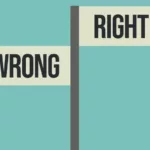I’m at Intel Vision this week. In a break-out session, an Intel executive said something that caught my interest. He said that, typically, a vendor gives out a sample of the product he’s talking about for free. Intel doesn’t do this because this class of product is critical to a customer’s operations but, to him, a free product is a cost center, making it inherently unreliable. He didn’t mean unreliable regarding quality, but unreliable in terms of vendor investment.
This has been historically true and goes to why Microsoft lost the browser market. This created a lot of unplanned product-switching in most companies since those firms had to switch from Internet Explorer to Google Chrome, another free product. But Microsoft has just tossed generative AI into its offerings, which caught Google napping, and now both Chrome and Google Search are at risk because those products are also “free”.
Let’s explore the risk of “free” this week because it goes beyond the “cost-center” aspect I mentioned above.
Cost centers
The problem with most enterprise-class free products is that they are cost centers. And what do companies do with costs? They reduce them. This means that the funding that would typically be used for related employee raises and benefits gets reduced over time, there is no marketing budget for the offering that can be justified, R&D gets cut over time as an unnecessary cost, and the smart employees move away from the offering to other projects that are tied to revenue to assure their career and financial advancement. As we saw with both the Microsoft and Google examples, this means that the product doesn’t advance timely, teams advancing or maintaining the product are reduced and become less capable over time, and customer pain increases because there is no monetary incentive, only a brand preservation incentive, to maintain the product. And even though the brand damage of IE’s collapse was significant, it still wasn’t prevented any more than it appears Google was able to justify adequate funding for Chrome.
This means that a free product will be an increasingly risky product over time and that there is little the user or client company can do to get adequate funding restored because they have no product-tied financial lever to pull. In fact, the opposite may be true. For those working on the product who are underpaid and overworked, losing a customer might be seen as a benefit, putting the related financial incentives at cross purposes to the long-term needs of the client company.
Other problems with “free”
One of the most visible issues with “free” is: Where is the funding coming from? One of the reasons Google isn’t trusted as a Cloud vendor is that it pays for “free” by selling client information, which is not at all dissimilar to what social networks do. While there is no evidence they sell the information from their Cloud clients, should they be breached and given their overall profit model, it might make the related decision-maker appear negligent, reducing their ability to sell-in to the market. So “free” not only puts their clients at risk, but it also reduces their revenue potential for enterprise services and damages the trust aspect of the brand.
This also likely contributed to why they aren’t at the moment competitive with Microsoft in search, given the advertising and data financial sources are uncoupled from users, the need to advance the user experience was substantially reduced so even though search wasn’t a cost center and was profitable, it didn’t get the user-focused funding it needed to stay competitive. Now Google is in a panic to catch up whereas it was previously the leader.
So, it is also important to understand how the vendor is funding a “free” product to assure that funding source doesn’t compromise the security of the product or otherwise put the product users at risk.
Wrapping up:
It is critical to understand the cost and profit dynamics of a “free” product because the hidden costs of poor long-term support, creative ways to cover costs, or turn it from a cost to a profit center by selling something that the user doesn’t want sold.
In the end, “free” carries a lot of risk. It is generally better to pay for the software and services you acquire so that your relationship with the vendor is defined, the vendor is motivated to maintain and assure the offering, and there is less risk of the vendor doing something you don’t want to cover their bills.








